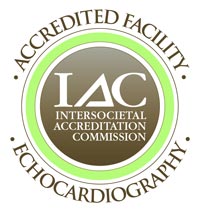Cardiac Imaging
As a specialty hospital, the majority of imaging services offered at Deborah are designed to aid in the diagnosis of heart, lung, and vascular conditions. Our facility is accredited by the IAC in the areas of vascular testing, nuclear cardiology, and echocardiography. All cardiac imaging scans are evaluated by a subspecialized heart-focused radiology technician.



The imaging center is open to patients of our Hospital as well as the general public, and offers accessible and affordable imaging and radiology services in a warm, patient-friendly environment.
Whether you’re already working with a physician or prefer that we connect you with a Deborah cardiologist, the process is seamless.
Our Cardiac Imaging Modalities
Arterial Doppler
An ultrasound of arteries in the extremities to detect blockages or plaque build up
Cardiac MRI
A highly specialized diagnostic tool that creates detailed images of the heart without radiation
Echocardiogram
A test of the heart using ultrasound waves to diagnose disease of the heart or its valves
Electrocardiogram (ECG/EKG)
A test that records the electrical activity of the heart
Event Monitor
A portable recorder that records the heart’s electrical activity when a patient has symptoms
Fluoroscopy
A continuous X-ray beam transmitted to a TV monitor to study the heart in motion
Holter Monitor
A portable device that continuously records heart rhythms for 24 to 48 hours
Nuclear Stress Test
Uses radioactive material to show how well blood flows into the heart muscle while at rest and during activity
Pediatric Echocardiography
A test performed on children that uses sound waves to create pictures of the heart
Pulse Volume Recordings
A noninvasive test to evaluate arterial blood flow in the arms and legs
Tilt Table Test
Records a patient’s blood pressure, heart rhythm and heart rate as the body is tilted at different angles
Vascular Ultrasound
A noninvasive method that uses sound waves to examine blood circulation in the arms and legs
The VIVO System™
Provides GPS-like mapping to pinpoint the exact location of a cardiac arrhythmia

